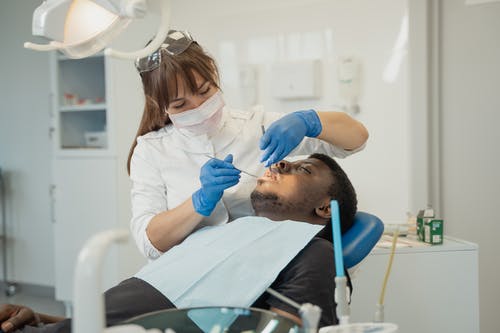You have spent the past few months putting various over-the-counter teeth whiteners, such as toothpaste, mouthwash, and those high-tech LED light whitening kits, to the test. After a few months, your teeth have brightened, except for that one tooth. Consider getting some internal bleaching done on your teeth because of that one. The pulp in your single tooth may be damaged. Professional or at-home teeth whitening will not work to fix this discoloration.
What is internal bleaching?
Internal bleaching illuminates teeth from the inside out, unlike the more conventional procedure of applying whitening ingredients to the tooth’s surface. When it comes to stains that regular surface bleaching products can’t remove, the solution is internal tooth bleaching, which employs special procedures and whitening ingredients.
Sometimes, a dentist can bleach just one tooth if it has become significantly stained, but the teeth around it are still normal. The purpose of internal dental whitening is to lighten a tooth so that it blends in better with its neighbors.
The Perks of Internal Bleaching
Smoking and consuming staining foods and drinks, such as coffee and wine, are two of the most common causes of tooth discoloration over time. However, root canal therapy or trauma can also cause discoloration of the teeth. This tooth discoloration starts inside the tooth and works its way out.
Internal bleaching is the only effective method for lightening discolored teeth and returning them to their normal color. Here are some advantages you might anticipate from undergoing this dental procedure:
Eliminate Any Discoloration
The discoloration that can occur before or after a root canal can be eliminated with internal bleaching.
Restore Your Smile
When teeth are whitened from the inside, they blend in with the rest of your smile, and you can finally show it off with confidence.
A More Realistic Appearance
Removing the stain offers your tooth a more natural appearance, making it look as vibrant as the rest of your teeth.
Blends With Existing Teeth
By lightening the teeth from the inside, a discolored tooth can blend in with the others and be less apparent.
Talk openly with a dentist from Stoney Creek dentistry specializing in restorative dentistry if you’re thinking about undergoing internal bleaching. Knowing what’s available to you and why will put you in an excellent position to make health-related decisions. Inquire about the endodontist’s level of expertise and what you can anticipate from treatment.
How is it different than tooth whitening?
While internal bleaching and professional teeth whitening are two distinct processes, they have a common goal. The end outcome is nothing less than a whitening of the teeth. These two procedures are, however, very different from one another. The term “external bleaching” is commonly used to refer to professional teeth whitening.
At-home whitening kits and in-office laser whitening are the two most popular options for brightening teeth. Tooth whitening by internal bleaching is a more invasive treatment designated for those who have had root canal therapy. You can find out if you are a good candidate for this treatment by consulting a dentist specializing in cosmetic dentistry procedures like tooth whitening and internal bleaching.
The Takeaway
Nothing beats an internal bleaching treatment when it comes to whitening your teeth. Although the effects of internal bleaching tend to remain for about a year, you may need to undergo additional treatments to keep them in place. Discuss your options with a trusted dentist before moving forward with anything.




